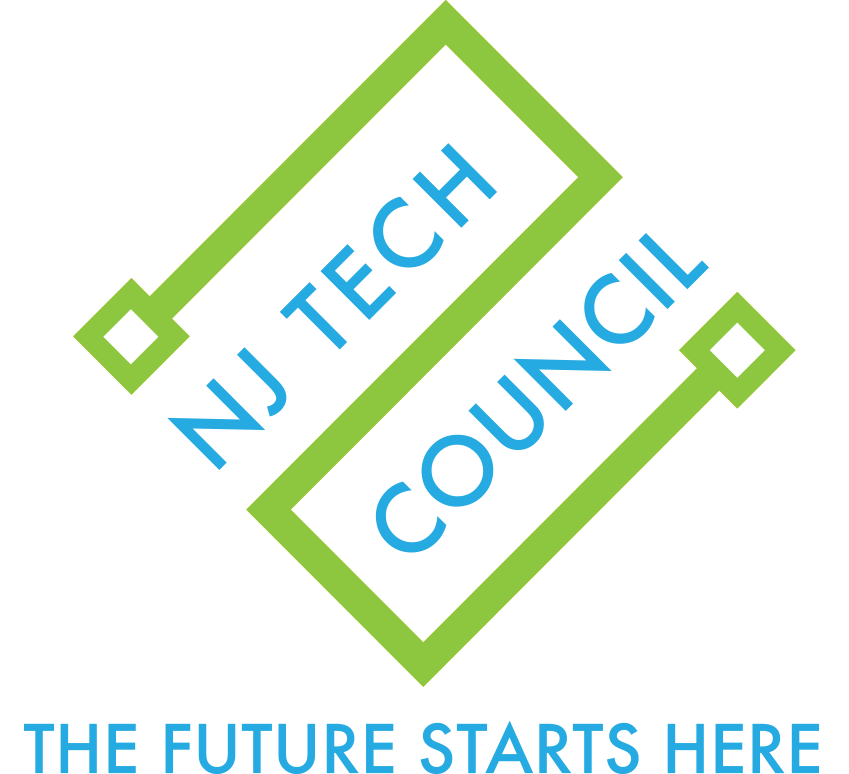The much anticipated October Jobs Report was recently released by the US Bureau of Labor Statistics (BLS). On a seasonally adjusted basis, total nonfarm employment rose by 250,000 in October, according to the US Bureau of Labor Statistics (BLS) in its monthly jobs report. The gain of 250,000 exceeds the median projection of 200,000 jobs from the Bloomberg survey. Temporary help services employment rose by 0.1% from the prior month, adding 3,300 jobs, and the temporary penetration rate remained roughly flat at 2.04%. The national unemployment rate remained at 3.7%.
Background and Analysis- On a year-over-year (y/y) basis (October 2018 over October 2017), total nonfarm employment was up 1.7%, and monthly job gains have averaged approximately 210,000 over the past 12 months. Temporary help employment was up 2.2% y/y, with monthly job gains averaging approximately 5,500 over the past 12 months.
Of the 15 major industry groups, the three that most drove total nonfarm employment growth in October (on a seasonally adjusted basis) include healthcare and social assistance (+46,700), leisure and hospitality (+42,000), and manufacturing (+32,000). Gains were broad across industries, as there was only one decliner, education (-2,500). On a year-over-year basis, natural resources/mining continued to lead all industry groups in terms of percentage growth, with 9.4%, once again followed by construction and transportation/warehousing, with 4.7% and 3.5% growth, respectively. Information was the one decliner on a y/y basis, down 0.5%.
Wages appear to be gaining traction at last, with y/y growth in average hourly earnings accelerating to 3.1% in October.
BLS Revisions- The change in total nonfarm payroll employment for September was revised from +134,000 to +118,000, and the change for August was revised from +270,000 to +286,000. With these revisions, total nonfarm employment gains during the two-month period were unchanged.
The change in temporary help services employment for September was revised from +10,600 to +7,600, and the change for August was revised from +12,400 to +10,800. With these revisions, temporary help employment growth was less than previously reported by 4,600 jobs.
Staffing Industry Analysts’ Perspective- Regarding total nonfarm employment, this was a favorable jobs report. Even if you take the average of the last two months (to account for the recovery from the impact of Hurricane Florence in the prior month), the employment gain is a moderate 184,000. Moreover, wage growth, the one area that had not been as strong for so many years in this expansion period, appears to be gaining traction at last.
Temporary help employment growth, however, has become increasingly mild, with the temporary penetration rate remaining roughly flat throughout most of this year. Temporary staffing may be reaching a plateau, which would be normal if we are approaching the tail end of an expansion in the business cycle.
James F. Lynch PhD, MBA – Regional Personnel Services ©2018
The national unemployment rate declined to 3.7% from 3.9% in the prior month. However, the U-6, or “underemployment” rate which includes part-time workers who would prefer a full-time position and people who want a job but aren’t actively looking, actually ticked up from 7.4% to 7.5% in September.
See full report at https://lnkd.in/dWWkkeg
James F. Lynch PhD, MBA – Regional Personnel Services ©2018
With the changing times in our economy and especially the labor force, employers must stay keen to the trends of employee preference and needs. As a new generation emerges into the labor force, of course, there is a new trend surfacing with regards to the conventional work schedule. According to recent studies, Millennials desire to embark on a journey of jobs rather than sit at the same desk from 9-5 for the rest of their lives. They want to be a part of an influential team and make positive changes rather than just get credit for showing up in the morning. This desire needs to be captured by employers and used to their benefit. By hiring temporary work from this up and coming millennial generation it will infuse new and creative ideas that can grow a project rather than keep it stagnant. A fresh young mind can bring in a new perspective and revive old static ways to give your project just the boost it needs. And when it comes to employing an efficient and bright workforce, fluidity and interchangeability are key. Therefore if employers can create a diverse and balanced team full of both full-time and temporary personnel they should generally have a greater level of productivity.
Read article:
http://www.forbes.com/sites/singularity/2015/03/27/on-demand-employment-how-todays-workers-are-choosing-journeys-over-jobs/
James F. Lynch PhD, MBA – Regional Personnel Services ©2018
The competition for the best talent is fierce. When salary and benefits are equal, candidates look to the culture, reputation and values of the company. Companies with a strong culture based on a clear set of values, and have taken a leadership role in such areas as environmental responsibility, for example, will develop the best reputation, and will therefore be able to attract the best employees.
A great example is Ingersoll Rand’s initiative across the company’s more than 42,000 employees to increase the awareness of their actions leading to more sustainable workplaces, homes and communities.
Read full article on Ingersoll Rand: http://www.forbes.com/sites/christopherskroupa/2017/06/16/hiring-lackluster-talent-hurts-your-companys-resilience-and-reputation/#5a473b846281
A company’s reputation can be affected by a poor hire, as well: https://regionalpersonnel.com/wrong-hire-costs-part-iii/
James F. Lynch PhD, MBA – Regional Personnel Services ©2018

Worker training is a critical limitation to our long-term economic growth. US needs to make targeted investments in our workforce in various industries through worker training and education to reduce the increasing gap between number of unqualified workers and the increasing number of job openings.
In 2015, federal, state and local governments in the U.S. spent less than a 0.5% of gross domestic product on programs to train those who are or could be in the labor market, the article states. That is less than most other industrialized nations, including Canada, Australia and Germany. In addition, U.S. schools and governments have a mixed record of success in retraining Americans who lost their jobs for new roles.
According to this recent paper, spending on education and training in the U.S. has been mostly focused on people younger than 25 years old. Relatively little is spent during a person’s working life by employers or the government, potentially leaving them without the ideal skill set for modern jobs. Many employers are reluctant to provide that training, fearing competitors will reap the benefits by hiring away their skilled workers.
For complete details, please visit: https://www.wsj.com/articles/without-better-training-u-s-will-fall-short-on-workers-economists-say-1531850521?mod=hp_major_pos12&ns=prod/accounts-wsj
James F. Lynch PhD, MBA – Regional Personnel Services ©2018

As the talent war heats up and companies are struggling to attract and retain millennials, they must keep in mind what matters most to them. Finding an organization that will help them learn, grow and further their careers. More importantly, companies must not simply “advertise” that they provide these, they must embed them into their corporate cultures. When a company accurately reflects its culture, it’s easier to attract the right talent. An employer’s culture and branding strategy should be clearly expressed in its recruiting materials and website, including any videos and social media.
For full article, please see: https://www2.staffingindustry.com/Editorial/Daily-News/Millennials-rank-top-workplaces-helping-workers-grow-is-a-top-factor-46378
Best practices from the top-ranked companies include:
- Provide opportunities for personal growth
- Companies must make a social impact
- Support flexibility & options to perform work differently
- Prioritize health and family
- Offer tuition reimbursement
See our latest search for 2 Directors of Clinical Affairs at: https://regionalpersonnel.com/job/clinical-spine-orthopedic/
James F. Lynch PhD, MBA – Regional Personnel Services ©2018
There are more jobs than people out of work. According to the Bureau of Labor Statistics, in April there were 6.7 million job openings and just 6.4 million available workers to fill them. As the demand grows, however, workers are more confident about moving between employers and talent wars will naturally escalate. April marked the second month in a row that there were more vacancies than available hires, a phenomenon that had not happened before 2018. Despite the mismatch, sizeable wage gains remain elusive, with average hourly earnings up just 2.7 percent over the past year.
The full article: https://www.cnbc.com/2018/06/05/there-are-more-jobs-than-people-out-of-work.html
See new search for:
James F. Lynch PhD, MBA – Regional Personnel Services ©2018
Here is an insightful blog on Time Management by one of the most efficient business minds I know—Jim Gano. Enjoy! – Dr. James Lynch
Guest Insighter
Jim Gano
March 14, 2018
Answering the question “How do you get it all done?”
I can’t even venture a guess at how many times I get asked the question “How do you get it all done?” or my personal favorite “Is there anything you don’t do?” to which I often jokingly reply, “yes, sleep!” I own a business with five separate and distinct divisions, including awards, signs, custom imprinted apparel, promotional items and varsity jackets, almost like having five companies in one. I also host a weekly radio show, called “Takin’ Care of Business.” I announce local high school football and basketball games. I am a freelance announcer. I emcee several fundraising events every year for local charities and organizations. I am a writer. I am a husband and a father. And I consult with and speak to numerous businesses on how to make their operations more efficient, improve productivity and return them to profitability. I also volunteer on several committees/boards in my community. As you can see my plate is pretty full. And I wouldn’t have it any other way.
Sometimes when asked how do I get it all done, I am confused by the question. I get it done because I have to. My day starts at 5am when I wake up and I start prioritizing the top five things I need to do that day. There will be many more things that have to get done, but these five are the “must do’s” of the day. I get it done because I set goals and times for things to be finished and just like President Jed Bartlett, on the TV show “The West Wing” as soon as I am done with one task I ask, “What’s next?” though I don’t reference Mrs. Lanigham, then I move onto the next task.
Recently, one woman really pressed me for an answer when I was a guest speaker at a Women in Business luncheon talking about ‘marketing and promoting your business’ and said “I really want to know how you do it all.” And it didn’t seem like she was going to let me off the hook until I answered her. So I said, “I make time for everything, I prioritize tasks (even color code them) and delegate what others on my staff can do so I can focus on those things that only I can handle, and I don’t take on more than I can handle. If it is important to you, you will find a way to get it all done. Some days my calendar looks more like a kaleidoscope than a day planner, but not always. When there is a conflict in my schedule I try to reschedule something or if I can’t, I pick the one I deem most important and decline the second (or third or fourth). I may miss a favorite TV show while I prepare my radio show, but that is why I have a DVR, I’ll catch the show later. I may stay up later one night or get up early to work on something, but again if I deem it important, I’ll find a way to get it done.” She snarked, “Your wife must love that.” I told her “I am home almost every night for dinner, I spend time with her and our kids if they are home, we might watch a few TV shows or talk each night, but eventually if I need to get something done, I will excuse myself and do it, then return if time allows.
Again, it all comes down to what is important to you. My family is most important to me and I try never to let my work interfere with that. I realized a long time ago that there is much more time in the day if you use it wisely. I could fool around on the internet, or watch TV shows until my eyes cross, but those things aren’t as important to me as being with my family, building my business and making sure my employees have plenty of work to do to keep them employed. They are the backbone of my business and what allows me to do those other things I enjoy.
Years ago when I was asked why I do so much by someone I explained to them that when we die our headstone will have our name on it along with the date we are born and the date we died. In between those two dates will be a dash. That dash represents everything we did from the day we were born until the day we left this earth. I’m just filling up the dash. Sometimes when my wife or my friends ask me what I am doing at a particular moment I’ll tell them, “Just filling the dash.” And they all know what that means.
The takeaway here is simple. Do what is important to you. Don’t procrastinate. Make the time. Do it today, not tomorrow and you will be surprised how much more you can do with your extra time. Then, find something else to do, time with family, friends, travel, a hobby, volunteer, you pick, it’s your life.
But, never stop filling up your dash.
Jim Gano is an award winning business consultant and owner of Crown Trophy of Flemington an award retailer specializing in awards for corporate recognition and athletic and academic achievement. Additionally, the company has three other divisions, a full service sign shop, a promotional products division, and a custom imprinted apparel division. Gano also hosts a weekly radio show called “Takin’ Care of Business” which can be heard at noon (Eastern) every Thursday by logging onto www.hunterdonchamberradio.com or on WHCR-DB
Would you like to be a Guest Insighter? If so, please send a sample article to [email protected] for consideration. Please note that we can reciprocate by composing articles for your site or publication.
James F. Lynch PhD, MBA – Regional Personnel Services ©2018
Preparing for a job interview is a key factor of success in any job search. To prepare for a job interview, however, candidates must understand how to respond to behavioral interviewing. One of the most common mistakes people make in interviews is failing to answer these clearly, concisely and with confidence.
Behavioral interviewing is a technique used to probe into the candidate’s inner-self, motivation, adaptability, etc. These questions help interviewers better understand how a candidate developed and applied a skill, ability, or character trait in their pursuit of a successful outcome of a project or task in a previous role. Specific, open-ended questions can be asked that requires candidates to give detailed answers, and thus, will provide insights as to how a potential candidate might approach and overcome a particular challenge. Please also see my article, Predicting Candidates’ Success.
 Some behavioral questions might be:
Some behavioral questions might be:
“Tell me about a time when you were given a challenging project or task with an unreasonable timeline.
What did you do?”
“Tell me about a time when you were given an assignment that was beyond your comfort-level, skills, and/or experience? What did you do? Were you successful? Did you grow professionally as a result? How?”
A candidate’s answers to these questions will help an interviewer understand whether this person has the personality, attitude, aptitude, and experience to succeed in their company and culture. Each company, however, has developed its own culture over time (Please see Company Culture). Thus, in crafting their responses, candidates should take into account a company’s culture whenever possible.
Your answers will also allow the interviewer to gauge your ability and comfort in constructing a concise, intelligible and credible story. At some point in your career, you may need to speak in front of senior managers, peers, clients, etc. To be seen as articulate and professional, will be critical to your progressive career in future roles within this company.
Preparation is Key to Acing a Job Interview
Good Luck
Jim Lynch PhD
James F. Lynch PhD, MBA – Regional Personnel Services ©2018
Four in 10 workers (41%) say they would accept more paid vacation time in lieu of a pay raise if given the choice, according to surveys of 733 human resource managers and 2,062 employees. While 70% of workers consider paid vacation time a right of employment, rather than a benefit, a significantly lower number of employers (58%) share that view. Additionally, more than one-third (39%) of workers consider their company’s paid vacation plan inferior to that of comparable industry competitors. These gaps underscore the critical connection between vacation time and job satisfaction, and the importance for employers and employees to find a mutually-beneficial compromise.
See full article at – http://www.prnewswire.com/news-releases/time-is-money-nearly-half-of-workers-would-take-extra-vacation-time-over-a-pay-raise-300497673.html
James F. Lynch PhD, MBA – Regional Personnel Services ©2017








